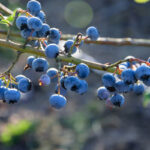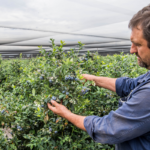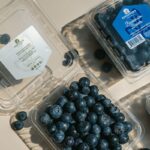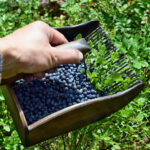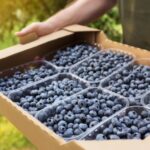Introduction of bacteria is found to reduce mold growth in blueberries

Research published on ScienceDirect reveals that the Botrytis cinerea fungi can significantly reduce the severity of gray mold on blueberries, offering growers a promising new option for post-harvest pathogen control.
Researchers conducted in vitro assays to evaluate the effects of strains of B. cinerea on blueberries. Results showed that in the presence of the bacteria, the severity of gray mold on the fruit decreased by just over 71%.
Additionally, the study, "Antifungal Effect of Volatile Organic Compounds (VOCs) Released From Antarctic Bacteria Under Postharvest Conditions," highlights that the bacterium releases a variety of volatile organic compounds (VOCs). These compounds include alcohols (1-octanol, 10%), aldehydes (paraldehyde, 2%), esters (ethyl butyrate, 4%; isoamyl acetate, 2%), ketones (2-nonanone, 1%), terpenes (linalool, 2%; D-limonene, 1%), phenolic derivatives (2,4-di-tert-butylphenol, 3%), and others. The VOCs were identified using gas chromatography-mass spectrometry.
The release of VOCs alters and affects the germination of B. cinerea, inhibiting the growth of the mold.
Currently, the primary method to manage fungal infections is the use of synthetic fungicides. Post-harvest treatments are generally limited to fruit surface sterilization and the application of high-dose irradiation, which can damage fruit tissue or leave residues that negatively impact taste and quality.
The study aimed to provide a biological alternative to conventional post-harvest treatments. It evaluated the antifungal activity of Pseudomonas sp. AN3A02 on blueberry isolates of B. cinerea. The findings suggest that Pseudomonas sp. AN3A02 could serve as an effective biological agent for antifungal packaging, offering a sustainable option for shipping blueberries to distant markets.

















